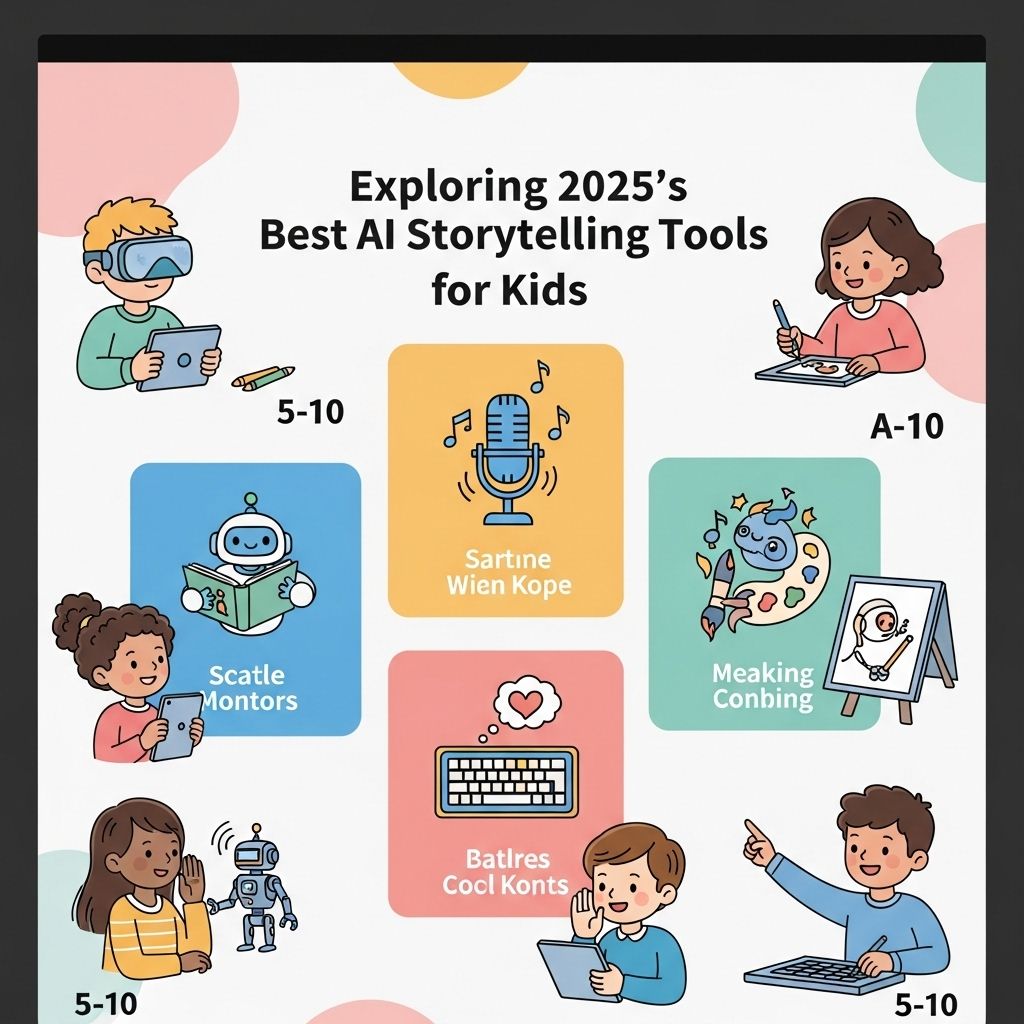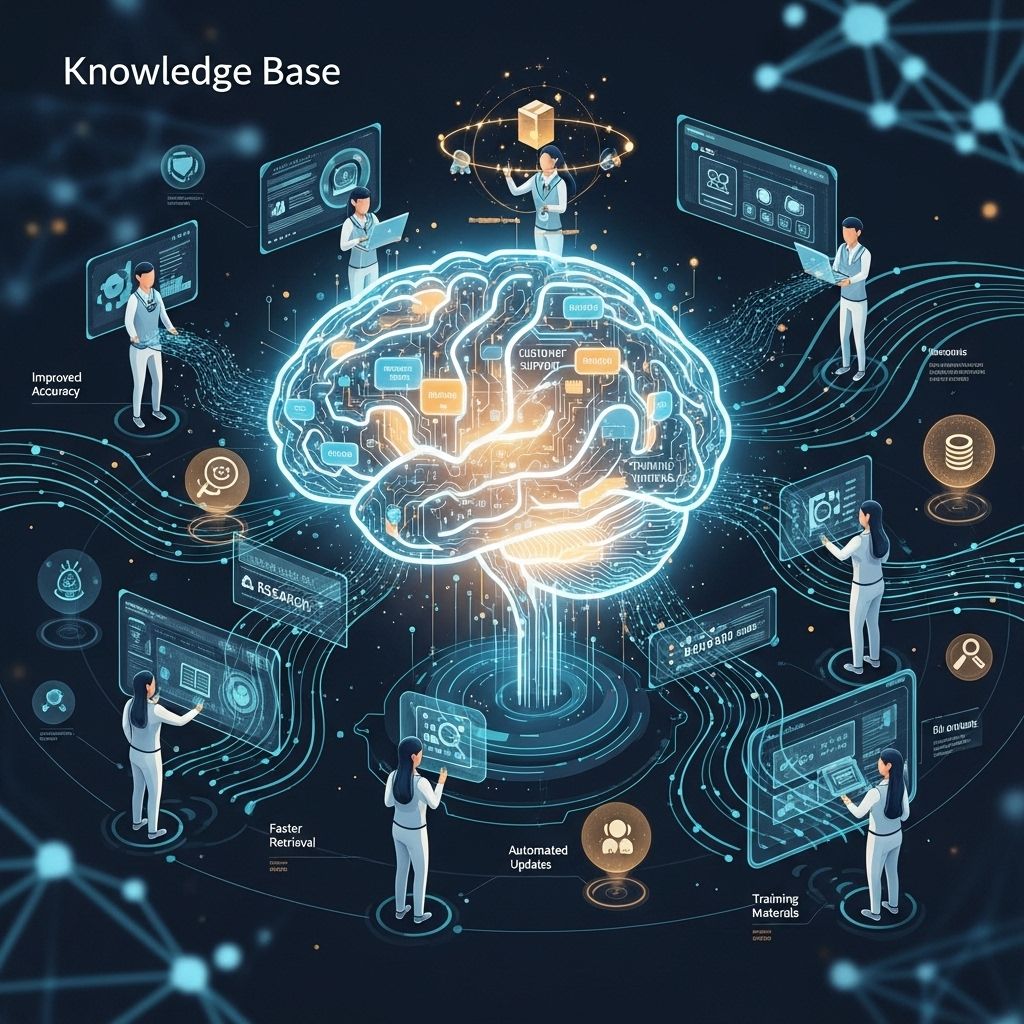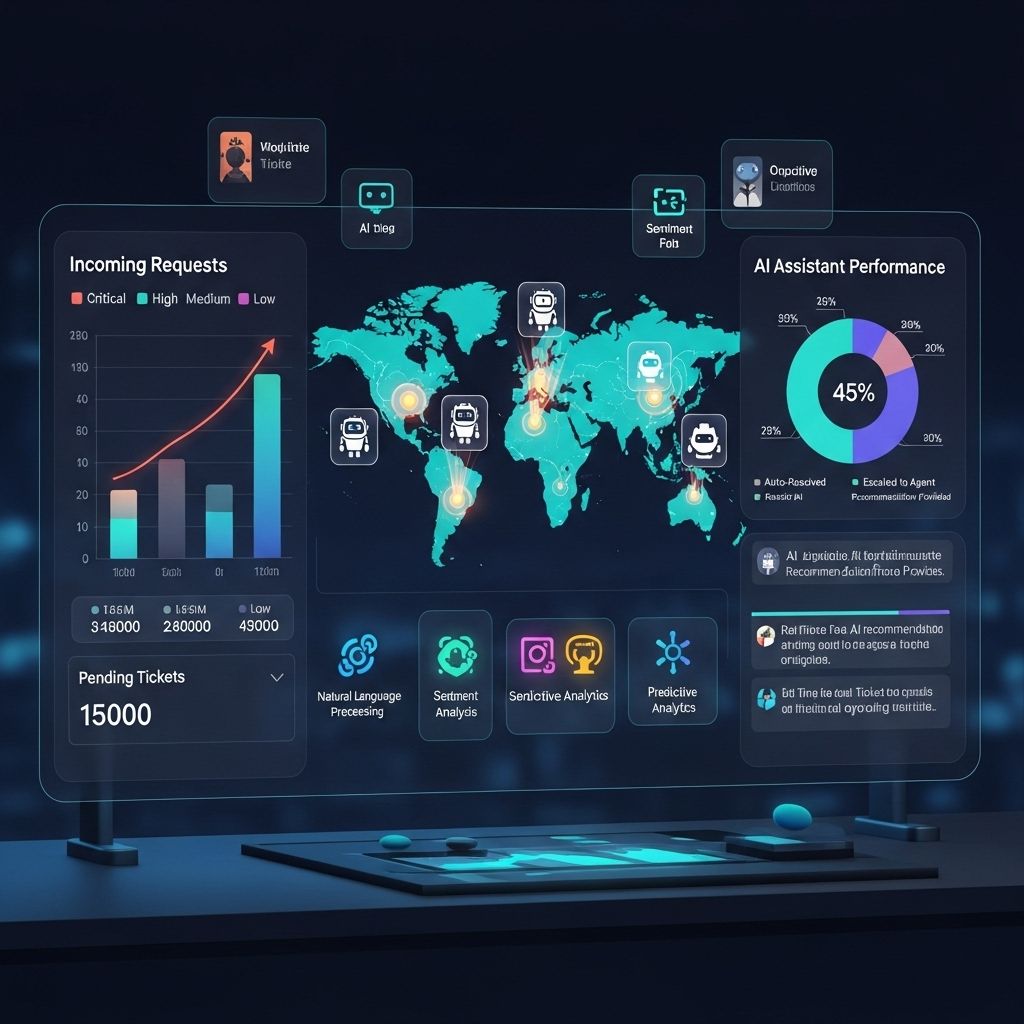Discover the Top AI Storytelling Tools for Kids in 2025
Explore the best AI storytelling tools for kids in 2025 that enhance creativity, learning, and fun storytelling experiences.

As technology advances at an unprecedented pace, the realm of storytelling experiences a revolution that captivates young minds. The integration of artificial intelligence into storytelling tools is reshaping how children engage with narratives, enhancing creativity, and sparking imagination. By 2025, various AI-driven platforms are expected to emerge, offering innovative ways for kids to create, explore, and immerse themselves in stories. This article delves into some of the most promising AI storytelling tools that are set to make a splash in 2025.
Table of Contents
Transforming Storytelling: The Role of AI
AI is not merely a tool; it is an enabler of creativity. By providing children with interactive and personalized storytelling experiences, AI tools facilitate a deeper understanding of narrative structures and character development. These platforms can adapt to each child’s preferences, making the process engaging and tailored:
- Customization: Children can influence story arcs, character traits, and more.
- Interactive Elements: Kids can interact with stories, making choices that alter the narrative direction.
- Educational Value: Many tools incorporate learning elements, enhancing vocabulary and comprehension.
1. StoryCraft – The Interactive Story Builder
StoryCraft is an innovative platform designed to empower children in the art of storytelling. It uses AI algorithms to generate story prompts, character suggestions, and plot twists based on user inputs.
Features
- Interactive interface that encourages creativity.
- AI-generated plot outlines that children can tweak.
- Incorporates sound effects and illustrations to bring stories to life.
How it Works
Users start by selecting a genre or theme, such as adventure or fantasy. The AI then provides a set of characters and potential storylines. Kids can modify elements to create a unique tale.
2. KidLit AI – The Personalized Story Generator
KidLit AI focuses on personalization, allowing children to input their preferences and interests to create customized stories. This tool connects directly to the child’s reading level and interests to generate engaging narratives.
Features
| Feature | Description |
|---|---|
| Custom Themes | Children can select themes that resonate with them. |
| Interactive Choices | Decisions lead to alternative plot paths, enhancing engagement. |
| Reading Progress Tracking | Monitors improvements in reading skills over time. |
Educational Aspects
KidLit AI emphasizes literacy by offering vocabulary suggestions and comprehension questions tied to the stories generated.
3. StoryTeller Buddy – The Collaborative Storytelling Platform
StoryTeller Buddy is aimed at fostering collaboration among young storytellers. This tool encourages kids to work together on a story project, blending their ideas through a seamless AI interface.
Collaboration Features
- Group chat options for brainstorming.
- Joint story editing tools, allowing real-time modifications.
- Feedback system that promotes constructive criticism.
Benefits of Collaboration
Working in groups enhances social skills, teaches conflict resolution, and builds teamwork abilities, which are essential for future professions.
4. PixelVerse – The Visual Storytelling Experience
For children who are visually oriented, PixelVerse offers a unique storytelling experience by combining AI with visual media. Users can create digital storybooks with illustrations generated by AI.
Key Features
- AI-generated illustrations that match the narrative.
- Options for voiceovers to bring stories to life.
- Easy sharing options to showcase creations with family and friends.
How to Use PixelVerse
To start creating, children can draft a story outline. The AI then suggests images that correlate with various sections of the story, enabling a visually rich storytelling experience.
5. FutureWriters – The Gamified Writing Platform
FutureWriters gamifies the storytelling process, making it more appealing to tech-savvy kids. This platform incorporates game mechanics into writing, allowing children to earn points and unlock rewards for their storytelling efforts.
Game Mechanics
- Story Challenges: Weekly themes encourage creativity.
- Quests: Kids can complete missions to improve their writing skills.
- Leaderboards: Friendly competition fosters a community of young writers.
Educational Benefits
The gaming aspect not only increases engagement but also teaches essential writing skills and encourages regular practice.
Conclusion
The future of storytelling for kids is bright, with AI tools paving the way for immersive, interactive, and personalized experiences. As these tools continue to evolve, they will not only entertain but also educate, nurturing a new generation of storytellers. By leveraging the power of AI, we can inspire children to explore their imagination and creativity like never before.
FAQ
What are the top AI storytelling tools for kids in 2025?
In 2025, some of the best AI storytelling tools for kids include StoryCraft, KidGen, and TaleMaker, which offer interactive and engaging storytelling experiences.
How can AI storytelling tools benefit children’s creativity?
AI storytelling tools can enhance children’s creativity by encouraging them to generate unique stories, explore different narrative styles, and develop their imaginative thinking.
Are AI storytelling tools safe for children?
Most AI storytelling tools designed for kids have safety features in place, including content filters and parental controls, ensuring a safe and age-appropriate experience.
Can kids use AI storytelling tools without adult supervision?
While many AI storytelling tools are user-friendly, it’s recommended that younger children use them with adult supervision to ensure they navigate the technology safely.
What age group is best suited for AI storytelling tools?
AI storytelling tools are typically designed for children aged 5 to 12, though some platforms may cater to older kids with more advanced storytelling features.
How do AI storytelling tools work?
AI storytelling tools use algorithms and machine learning to analyze user input, generate narrative suggestions, and help children build their stories through interactive prompts.







